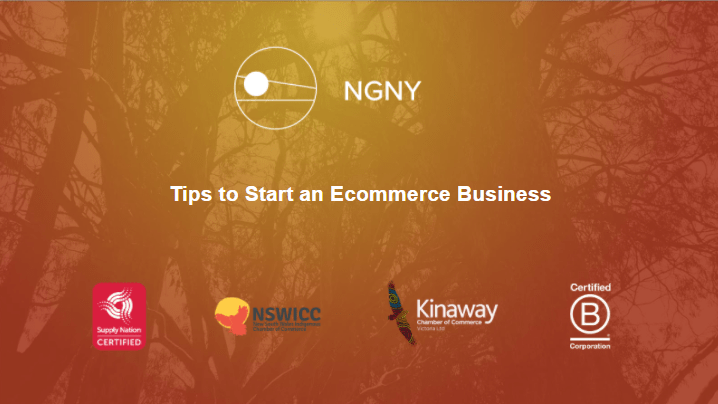
Shopping online used to be a convenience and a luxury, now – it’s a necessity. Ecommerce is the present and future. The growth of ecommerce skyrocketed and according to EMarketer survey published in 2020 it is projected to have 385% percent growth in 2023. It was recorded that from 2014 up to this day there was a significant rise in ecommerce global retail ecommerce sales. In 2014 alone, the sales recorded was $1.4 Trillion Dollars and still growing exponentially over the years. The recent data published was 2020 which recorded $5.7 Trillion dollars. Based on this data alone, the future of ecommerce is promising and for those who are thinking to chart their paths on ecommerce, it is high time to consider approaching the ecommerce market the right way. This article will share some helpful tips to build that business dream of yours into a reality.
- Writing a business plan.
Just like going to a battle or running a race, it is important to be prepared. Before concluding the right products or services to sell, it is imperative that one conducts a research getting concrete findings on the most feasible business model, existing demands, accessibility, logistics, shoppers’ buying trends and competitors offers and pricing.The latter is also essential to differentiate your business from competitors and evaluate what needs to be done before launching your product.
- Choosing the right product to sell in your ecommerce venture.
After obtaining results from your research, it is time to evaluate your ideas and develop whether or not they are feasible or not. In essence, this step can be summarized into choosing a product your customers will love. In obtaining your product, it is not as easy as one envisions. You have to take into consideration how you can get your consistent supply, in case you source out your products or you manufacture the products yourselves. It is also important to consider your passion in selling these products, you have to believe in your brand, otherwise you can’t be effective in your launch.
- Selecting an ecommerce platform.
After settling with the product of your choice and ironing out how to obtain them, you need to choose an ecommerce platform where you’ll host your website. The right ecommerce platform sets you up for success. In considering a sales channel, choose one where people already shop. The most well-known is Shopify platform, as it is one of the most affordable to get started on and offers a wide range of customization options as you grow. However, there are other ecommerce platforms which you can consider and you must pick the one which suits your needs.
- Setting up your business proper.
This is one of the crucial stages in starting your ecommerce business. You need to choose a business website domain or logo which will reflect your business identity. Both have to be professionally looking so that your potential customers will not think that your service or product is a scam. First impression may not be everything but sure it is something. When someone first comes to your online store, it is critical to ensure it catches their eye and doesn’t make them leave after only a few seconds. You want to give them something that is pleasant to look at and features appropriate colors and a recognizable logo. Further, a user-friendly navigation where a customer can easily locate where he or she needs to go. Let’s face it, an enticing website makes people want to buy from you. You may invest in good photography, compelling content and strategize in a way that your products are displayed in a way that buyers want to buy from you. Make it as clear and aesthetically pleasing as possible. Also, a pro tip is to make your website compatible on mobile devices. As research pointed out, more than 50% of sales in ecommerce are transacted on mobile devices.
- Preparing to launch.
This is where you work on shipping other fulfillment requirements. Based on your preliminary data from researching, you need to contact and make sure your shipping courier is reliable and one that can fulfill your needs. Remember, that unlike a physical store, shipping is a necessary concern for ecommerce businesses.
- Creating your product pages.
This is already the heart of the website. Presenting your products in the best possible light to consummate sales.Your pages must be clear, consistent and catchy. Be as transparent as possible since this is not the traditional selling where consumers can actually touch a tangible thing before a purchase. Details such as selling points, item information and specs, product descriptions, and more. Product photos and fields to choose and see various colors, styles and quantities is also important. The more relevant details you include, the more likely you will be saved from answering enquiries from potential customers or worse those who are not really interested in buying your product. Also, another pro-tip is not to depend on product descriptions on manufacturers of a product widely sold online as it can badly affect your SEO chance on Google.
- Creating a blog, social media sites and a comm plan.
Your goal is to establish a solid online presence to grow your brand, expanding your reach. Never underestimate the power of words as compelling content makes waves for driving traffic on ecommerce websites. Content like blogs and articles aren’t only for customer’s informative consumption but these catapult your site to higher ranks at search engines as well. A well-developed Frequently-Asked-Questions (FAQs), regular posting of blogs incorporating your products or service and any content which is relatable to your audience are just some examples to be published on your ecommerce site.
This is also where you start to be intentional about developing a communication plan, a calendar where you plan what to post on your content page across your websites and social media platforms. Remember, nothing beats a regularly updated website in terms of boosting and growing your online presence.
- Setting up your checkout, shopping cart and wish list.
Your goal is to create a smooth shopping experience, Your shopping cart, check out and wish list options must be working smoothly as they contribute a large impact ona customer’s shopping experience. Avoid letting customers follow a bunch of extra steps which more often than not leaves unattended shopping carts. Remember, ecommerce must be friendly to shoppers and must be done as efficiently as possible. Incorporating accessible payment options like Apple Pay and Paypal easily change the game in your favor.
Your way to launching an ecommerce store entails a lot of work but it will be rewarding in the end. May the tips we’ve shared help you realize your dream into a reality. If you put your 100% into it, then success will never be not attainable.




